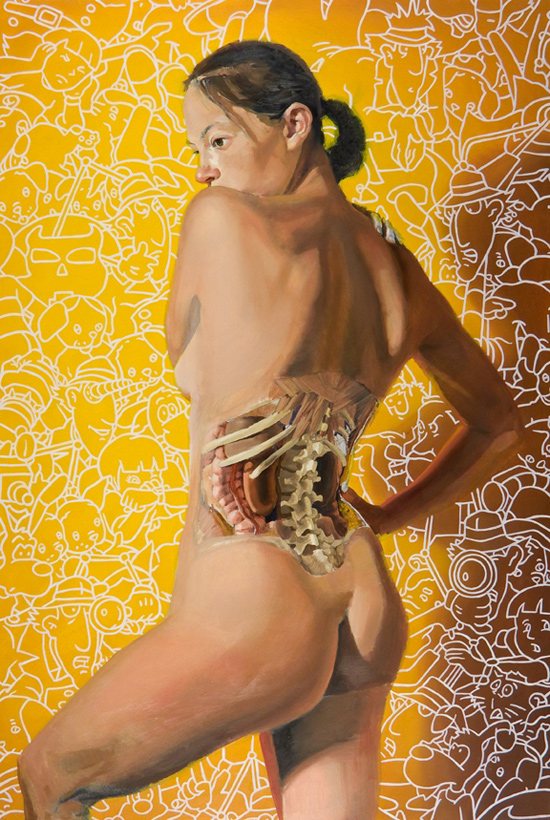Myocardium

Cardium Muscle Tissue is known as myocardium. Like skeletal muscle, myocardium is striated, and it contracts from that sliding filament mechanism. It’s not quite the same as the sarcomeres, but it’s the same mechanism where there’s filaments and there’s spreading apart and overlapping over and over. We have sarcoplasmic reticulum and t-tubules. Its different from skeletal muscle in that it’s going to have 1-2 nuclei (rather than multi) and we’re going to have short, branching cells.
Look at how, at the intercalated disc, we have zig-zag structures that come together and attach. In the top middle picture of (a), you see that “egg carton” type setup with gap junctions. They help direct transmission of the contractile signals and knits the cells together so they don’t fly apart during contraction because a torn heart muscle would be very bad.
We’re going to add fasciae adherens to that which are just longer desmosomes that help bind and transmit the physical forces of contraction. They are called fasciae adherens (adhering, gluing cells together) to emphasize their function in the heart. In (b) we see sarcolemma (same as in other muscle), sarcoplasmic reticulum, and t-tubules diving down from the sarcolemma to coordinate contraction.

Use this Table of Contents to go to the next article

YOU ARE HERE AT THE CARDIOVASCULAR SYSTEM






